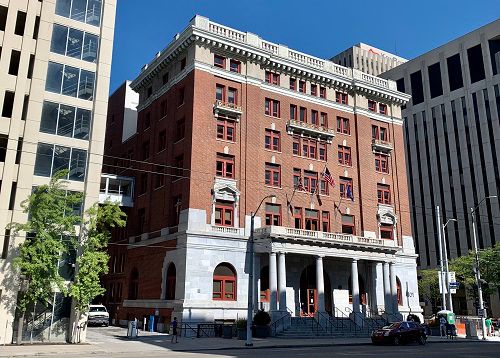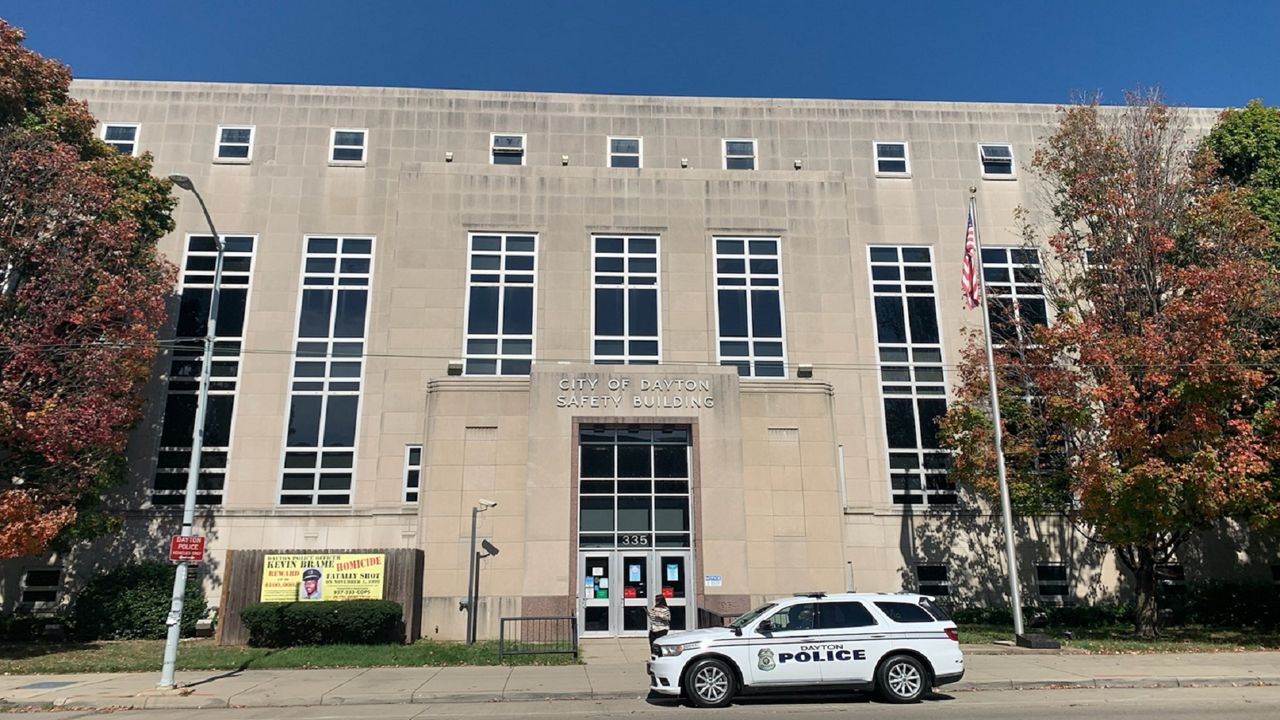DAYTON, Ohio — Tempers flared and emotions ran high at times Wednesday as Dayton residents and city officials voiced frustration over a now-viral video showing a Black man with a disability being dragged from a vehicle by police.
What You Need To Know
- A viral video shows Dayton police officers dragging a man with a disability out of the car
- Clifford Owensby is heard on the video saying he couldn't get out of the vehicle on his own because he's parapelegic
- On Wednesday, residents called for the officers to be fired and for the city to do more to improve community-police relations
- City leaders said a review of the incident is underway and the findings will be shared with the public
The city commission meeting at city hall was the first public meeting since Friday when the Dayton Police Department released a video of the incident involving Clifford Owensby.
Owensby was pulled over by DPD officers Sept. 30 as part of what the department called a drug-related investigation.
During the roughly 11-minute body-camera video on Sept. 30, officers command Owensby to exit the vehicle. They said "due to his history," they needed him to be outside of the car, so a K9 officer could go through the vehicle. Owensby said he couldn't get out because he is parapelegic.
Officers told Owensby they would help him out of the vehicle, but the 39-year-old refused. He, in turn, asked the officers to call their supervisor.
The video shows the officers then told Owensby that if he didn't agree to exit the vehicle they would have to forcibly remove him, which they did. Officers are seen on camera placing him on the ground to handcuff him and then, placing him inside the police cruiser.
Owensby can be heard on camera saying that the officer is hurting him.
Footage of the incident has sparked emotional reactions both in Dayton and around the country. The story has been broadcast on national media and led to hundreds of comments on social media.
City Commissioner Darryl Fairchild is paralyzed from the waist down as a result of a bike accident. He called the Owensby video a “kick in the gut." He added that the city must do better, especially as it relates to cultural sensitivity.
Owensby attended the commission meeting on Wednesday. At one point, he grew frustrated due what he claimed was missing video and left before the events wrapped up, Spectrum News 1 confirmed.
During that meeting, Owensby yelled out, “I’m out of here. … They wanted to set me up. They wouldn’t listen to me" as he exited.
He has filed a complaint with the Dayton chapter of the NAACP.
"The arrest of Mr. Owensby, in our opinion, is devoid of merit and the acts of the police officer was very egregious and unwarranted,” said Dr. Derrick L. Foward, president of the Dayton Unit of the NAACP. “We will continue to ensure that justice prevails in this particular case."
Foward went on to critique the Dayton Fraternal Order of Police, which issued a statement Friday saying “the officers followed the law, their training and departmental policies and procedures.”
Foward said he believes it was the officers, not Owensby, who escalated the situation.
"This person who's pulled over thinking he's going to get a tinted-window ticket is now being pulled from his vehicle by his hair," Foward said Thursday. "All you've got to do is listen to the tone of the officers to see who was really compliant and who was really aggressive."
Nine other Dayton residents used their allotted three minutes during the meeting to condemn the actions of the police officers and ask the city to do more.

There were also several protesters outside city hall, some of whom carried signs calling for an “End (to) police brutality."
Inside the commission chambers, comments ranged from a request for an apology from the city police department to demands that the officers be fired.
The officers involved in the incident remain on duty, per a DPD communications officer. Their names have not yet been released.
"Yet you put them back on the street,” said the first speaker, who identified himself as Bishop Richard Cox. "They don't deserve to be Dayton police officers."
Cox added that he was "appalled and upset by the deplorable actions of these officers," especially in light of recent police reforms the city of Dayton has worked to develop and enact since the death of George Floyd.
The Dayton Police Department and the city of Dayton have engaged in a process to amend some facets of local law-enforcement protocols, particularly as it relates to community-police relations.
DPD said Friday that they've included more than 100 groups in commission, which included months of work to develop 142 recommendations for reform.
One of those recommendations was use of body-worn cameras, which DPD began using earlier this year.
Mayor Nan Whaley said Wednesday that the city was only able to release the body-camera video because of ongoing police-reform efforts.
She credited the reforms for helping the city be more transparent and they're "committed" to the process moving forward.
Despite the progress, several speakers said not enough change has happened. And several of the key recommendations have not yet been put in place, namely some of those related to use of force.
"Over six months after submission, the commission has not yet accepted the most important of these recommendations," said Julio Mateo, who was involved in the Dayton police-reform process. "In light of Owensby's case, it is worth revisiting what recommendations the commission has delayed accepting and, in turn, delayed implementing."
Neither Whaley nor any of the other four commissioners responded to that comment. But each did thank each of the community members for attending the meeting and voicing their concerns.
Dayton City Manager Shelley Dickstein said there's been "substantial" internal discussion with regard to the review process for this incident. She said the review will look at whether the officers' actions were consistent with departmental policy.
She added that the process will be transparent and findings will be shared with the public. That could take four to six weeks.
"This process can and should take time. This is not a quick process because it is a thorough process," she said.
Dickstein went on to ask and thank the community for continued patience.
Owensby has been charged with two misdemeanors: Having tinted windows and failing to have his son in a car seat. He had not been charged with any drug-related offenses as of the reporting of this story.
Spectrum News was unable to get in touch with Owensby, or determine if his vehicle is identified as handicap accessible.



